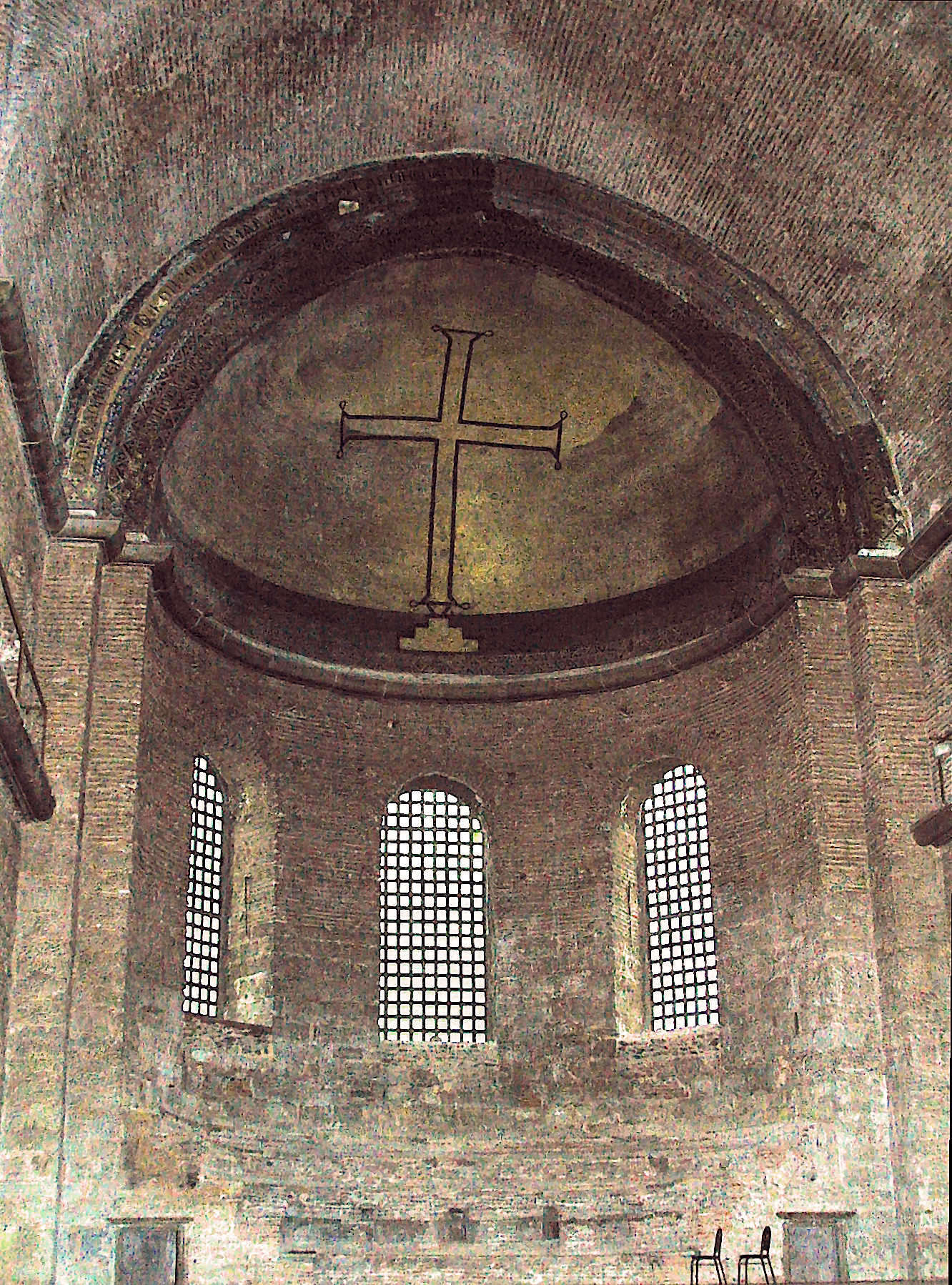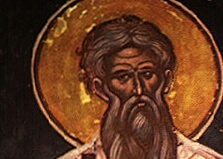|
Theodote (empress)
Theodote (; 780 – after 797) was the second empress consort of Constantine VI of the Byzantine Empire. She was a member of a distinguished family of Constantinople and her brother Sergios was mentioned as an ''hypatos''. Their mother Anna was a sister of Theoktiste and her brother Plato. Theodote was thus a maternal first cousin of Theodore the Studite, son of Theoktiste. Marriage By 794, Theodote served as a lady-in-waiting ('' koubikoularia'') of Irene. Irene was the widow of Leo IV the Khazar and mother of his heir Constantine VI. Irene had served as regent from 780 to 790 and still held the title of Empress. Constantine was married to Maria of Amnia and the imperial couple had two daughters, Euphrosyne and a younger Irene. However, according to the chronicle of Theophanes the Confessor, Constantine had turned against his first wife at some point. Theophanes attributed the deterioration of the marriage to the machinations of Irene, but the lack of a male heir following six ye ... [...More Info...] [...Related Items...] OR: [Wikipedia] [Google] [Baidu] |
List Of Byzantine Empresses
The term Roman empress usually refers to the consorts of the Roman emperors, the rulers of the Roman Empire. The duties, power and influence of empresses varied depending on the time period, contemporary politics and the personalities of their husband and themselves. Empresses were typically highly regarded and respected, and many wielded great influence over imperial affairs. Several empresses served as Regent, regents on behalf of their husbands or sons and a handful ruled as empresses regnant, governing in their own right without a husband. Given that there were sometimes more than one concurrent Roman emperor, there were also sometimes two or more concurrent Roman empresses. For most of the period from 286 to 480, the Roman Empire, though remaining a single polity, was administratively divided into the Western Roman Empire and the Eastern Roman Empire. Through most of this period, the separated imperial courts had their own lines of succession, and as a result their own sequen ... [...More Info...] [...Related Items...] OR: [Wikipedia] [Google] [Baidu] |
Royal Mistress
A royal mistress is the historical position and sometimes unofficial title of the extramarital lover of a monarch or an heir apparent, who was expected to provide certain services, such as sexual or romantic intimacy, companionship, and advice in return for security, titles, money, honours, and an influential place at the royal court. Thus, some royal mistresses have had considerable power, being the power behind the throne. The institution partly owes its prevalence to the fact that royal marriages used to be conducted solely on the basis of political and dynastic considerations, leaving little space for the monarch's personal preferences in the choice of a partner. The title of royal mistress was never official, and most mistresses had an official reason to be at the court, such as being a lady-in-waiting or maid-of-honour to a female member of the royal family or a governess to the royal children. However, their real position was most often an open secret, and there was ... [...More Info...] [...Related Items...] OR: [Wikipedia] [Google] [Baidu] |
Symeon Metaphrastes
Symeon or Simeon (died ), distinguished as Symeon Metaphrastes (Latin) or Symeon the Metaphrast (, ''Symeṓn ho Metaphrastḗs''), was a Byzantine writer and official regarded as a saint in the Eastern Orthodox Church. His feast day is celebrated on 9 or 28 November. He is best known for his 10-volume Greek menologion, a collection of saints' lives. Life About Symeon's life few details are known. He lived in the second half of the 10th century. Ephrem Mtsire puts him at the peak of his career in the sixth year of Basil II (982). Yahya of Antioch also makes him a contemporary of Basil II and Patriarch Nicholas II of Constantinople (984–991). In the 15th century, Mark Eugenikos wrongly called Symeon a ''megas logothetes''. The hagiographer actually lived a generation later than the historian Symeon Logothete. Works Symeon wrote mainly hymnody and hagiography. He composed '' kanones'', ''stichera'' and a hymn to the Trinity. He also compiled excerpts of the Church Fathers, p ... [...More Info...] [...Related Items...] OR: [Wikipedia] [Google] [Baidu] |
Second Council Of Nicaea
The Second Council of Nicaea is recognized as the last of the first seven ecumenical councils by the Eastern Orthodox Church and the Catholic Church. In addition, it is also recognized as such by Old Catholic Church, Old Catholics and others. Protestantism, Protestant opinions on it are varied. The Council assembled in 787 AD in Nicaea (site of the First Council of Nicaea; present-day İznik, Bursa Province, Bursa, in Turkey), to restore the use and veneration of icons (or holy images),Gibbon, p. 1693. which had been suppressed by emperor, imperial edict inside the Byzantine Empire during the reign of Leo III the Isaurian, Leo III (717–741). His son, Constantine V (741–775), had held the Council of Hieria to make the suppression official. The Council determined that the honorary veneration (''timētikē proskynēsis'') of icons was permitted, and that the true adoration (''alēthinē latreia'') was reserved for God alone. It further stated that the honor paid to the icon e ... [...More Info...] [...Related Items...] OR: [Wikipedia] [Google] [Baidu] |
Byzantine Iconoclasm
The Byzantine Iconoclasm () are two periods in the history of the Byzantine Empire when the use of religious images or icons was opposed by religious and imperial authorities within the Ecumenical Patriarchate (at the time still comprising the Roman-Latin and the Eastern-Orthodox traditions) and the temporal imperial hierarchy. The First Iconoclasm, as it is sometimes called, occurred between about 726 and 787, while the Second Iconoclasm occurred between 814 and 842. According to the traditional view, Byzantine Iconoclasm was started by a ban on religious images promulgated by the Byzantine Emperor Leo III the Isaurian, and continued under his successors. It was accompanied by widespread destruction of religious images and persecution of supporters of the veneration of images. The Papacy remained firmly in support of the use of religious images throughout the period, and the whole episode widened the East–West Schism, growing divergence between the Byzantine and Carolingian Em ... [...More Info...] [...Related Items...] OR: [Wikipedia] [Google] [Baidu] |
Iconodule
Iconodulism (also iconoduly or iconodulia) designates the religious service to icons (kissing and honourable veneration, incense, and candlelight). The term comes from Neoclassical Greek εἰκονόδουλος (''eikonodoulos'') (from – ''icon (image)'' + – ''servant''), meaning "one who serves images (icons)". It is also referred to as iconophilism (also iconophily or iconophilia from – ''icon (image)'' + – ''love'') designating a positive attitude towards the religious use of icons. In the history of Christianity, iconodulism (or iconophilism) was manifested as a moderate position, between two extremes: iconoclasm (radical opposition to the use of icons) and iconolatry (idolatric veritable (full) adoration of icons). History In contrast to moderate or respectful adoration, various forms of latria of icons (''iconolatry'') were also starting to appear, mainly in popular worship. Since veritable (full) adoration was reserved for God alone, such an attitude t ... [...More Info...] [...Related Items...] OR: [Wikipedia] [Google] [Baidu] |
Thessaloniki
Thessaloniki (; ), also known as Thessalonica (), Saloniki, Salonika, or Salonica (), is the second-largest city in Greece (with slightly over one million inhabitants in its Thessaloniki metropolitan area, metropolitan area) and the capital city, capital of the geographic regions of Greece, geographic region of Macedonia (Greece), Macedonia, the administrative regions of Greece, administrative region of Central Macedonia and the Decentralized Administration of Macedonia and Thrace. It is also known in Greek as , literally "the co-capital", a reference to its historical status as the "co-reigning" city () of the Byzantine Empire alongside Constantinople. Thessaloniki is located on the Thermaic Gulf, at the northwest corner of the Aegean Sea. It is bounded on the west by the Axios Delta National Park, delta of the Axios. The Thessaloniki (municipality), municipality of Thessaloniki, the historical centre, had a population of 319,045 in 2021, while the Thessaloniki metropolitan are ... [...More Info...] [...Related Items...] OR: [Wikipedia] [Google] [Baidu] |
Excommunication
Excommunication is an institutional act of religious censure used to deprive, suspend, or limit membership in a religious community or to restrict certain rights within it, in particular those of being in Koinonia, communion with other members of the congregation, and of receiving the sacraments. It is practiced by all of the ancient churches (such as the Catholic Church, Oriental Orthodoxy, Oriental Orthodox churches and the Eastern Orthodoxy, Eastern Orthodox churches) as well as by other Christian denominations; however, it is also used more generally to refer to similar types of institutional religious exclusionary practices and shunning among other religious groups. The Amish have also been known to excommunicate members that were either seen or known for breaking rules, or questioning the church, a practice known as shunning. Jehovah's Witnesses use the term disfellowship to refer to their form of excommunication. The word ''excommunication'' means putting a specific indiv ... [...More Info...] [...Related Items...] OR: [Wikipedia] [Google] [Baidu] |
Patriarch Tarasios Of Constantinople
Tarasios of Constantinople (also ''Saint Tarasius'' and ''Saint Tarasios''; ; 730 – 25 February 806) was the Ecumenical Patriarch of Constantinople from 25 December 784 until his death on 25 February 806. Background Tarasios was born and raised in the city of Constantinople. A son of a high-ranking judge, Tarasios was related to important families, including that of the later Patriarch Photios I of Constantinople. He had an elder brother, Sisinnios, who was captured during the invasion of Calabria in 788–789. Tarasios had embarked on a career in the secular administration and had attained the rank of senator, eventually becoming imperial secretary ('' asekretis'') to the Emperor Constantine VI and his mother, the Empress Irene of Athens. When Patriarch Paul IV of Constantinople retired to a monastery, he recommended the lay administrator Tarasios as his successor. [...More Info...] [...Related Items...] OR: [Wikipedia] [Google] [Baidu] |
Ecumenical Patriarch Of Constantinople
The ecumenical patriarch of Constantinople () is the List of ecumenical patriarchs of Constantinople, archbishop of Constantinople and (first among equals) among the heads of the several autocephalous churches that comprise the Eastern Orthodox Church. The ecumenical patriarch is regarded as the representative and spiritual leader of the Eastern Orthodox Christians worldwide. The term ''ecumenical'' in the title is a historical reference to the Ecumene, a Greek designation for the civilised world, i.e. the Roman Empire, and it stems from Canon 28 of the Council of Chalcedon. The patriarch's Episcopal see, see, the Ecumenical Patriarchate of Constantinople, is one of the most enduring institutions in the world and has had a prominent part in world history. The ecumenical patriarchs in ancient times helped in the spread of Christianity and the resolution of various doctrinal disputes. In the Middle Ages, they played a major role in the affairs of the Eastern Orthodox Church, as w ... [...More Info...] [...Related Items...] OR: [Wikipedia] [Google] [Baidu] |
Adultery
Adultery is extramarital sex that is considered objectionable on social, religious, moral, or legal grounds. Although the sexual activities that constitute adultery vary, as well as the social, religious, and legal consequences, the concept exists in many cultures and shares some similarities in Judaism, Christianity and Islam. Adultery is viewed by many jurisdictions as offensive to public morals, undermining the marriage relationship. Historically, many cultures considered adultery a very serious crime, some subject to severe punishment, usually for the woman and sometimes for the man, with penalties including capital punishment, mutilation, or torture. Such punishments have gradually fallen into disfavor, especially in Western countries from the 19th century. In countries where adultery is still a criminal offense, punishments range from fines to caning and even capital punishment. Since the 20th century, criminal laws against adultery have become controversial, with m ... [...More Info...] [...Related Items...] OR: [Wikipedia] [Google] [Baidu] |






